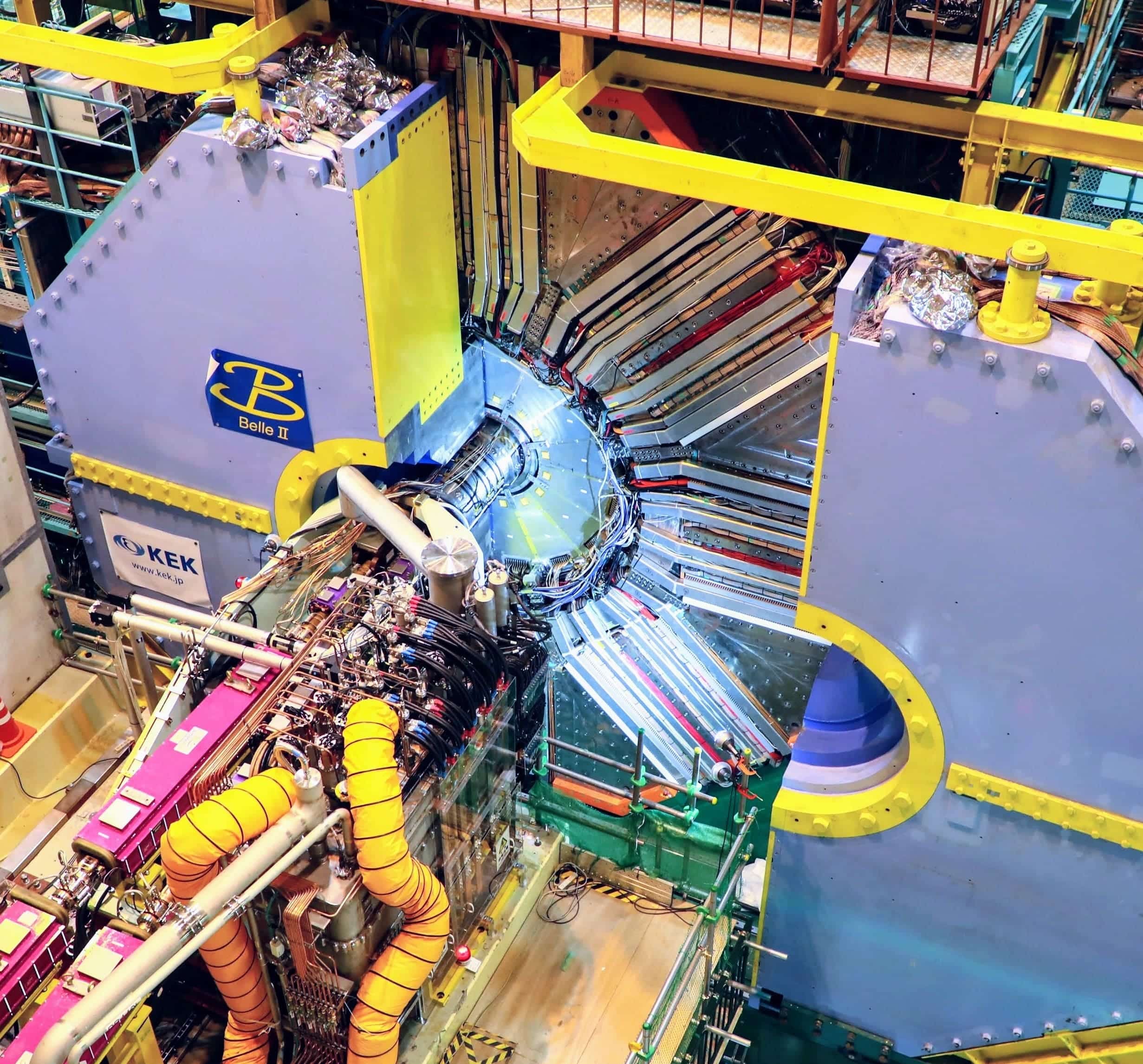TYL
Toshiko Yuasa Laboratory
Date of creation: August 2023
CNRS Institute: CNRS Nuclei & Particles
French director: Karim TRABELSI
Japanese partner: KEK (High Energy Accelerator Research Organization)
Japanese co-director: Shoji HASHIMOTO
Expected staff: TBD.
Website: https://tyl.cnrs.fr



The Belle II experiment hosted at KEK (High Energy Accelerator Research Organization).
OVERVIEW
The scope of the new CNRS-KEK laboratory, Toshiko Yuasa Laboratory (TYL), will be the search for quantum manifestations of new unknown physics processes not described by the standard model of particle physics and taking place in the very early universe.
The laboratory will be structured around following topics, with main pillars being accelerator physics R&D and accelerator-based experiments:
- Intensity Frontier
- Energy Frontier
- Cosmic Frontier
- Theory in particle physics and cosmology
- Instrumental R&D
- Accelerator physics
Among the leads that will be investigated to go beyond the known physics, we can mention the search for a new source of violation of the CP symmetry to explain the observed matter-antimatter asymmetry in the universe, the search for lepton flavor violation in charged lepton decays as already observed with neutrinos, and intriguing results questioning the long-standing concept of the so-called leptonic universality. They will be pursued mainly in accelerator experiments at the intensity frontier, like Belle II at SuperKEKB, COMET and neutrino experiments, in a complementary way to experiments at the energy frontier like ATLAS at the LHC and a future Higgs factory.
This scientific experimental programme will be led on the one side in collaboration with theorists, and rely on the other side on two key instrumental R&D:
- Innovative detector developments. In particular French partners are world renown expert and a driving force of CMOS pixel sensor R&D for particle physics and for the future upgrade of the Belle II experiment. A good opportunity of cross-fertilization is expected in that field. This R&D will benefit from the commitment of the Instrumentation Technology Development Center newly created at KEK and in particular its test beam line facility. The starting KEK activity on this topic would in turn benefit from the know-how of the French researchers, for instance with already existing prototypes to initiate sensor characterization and with instrumental contributions to the test beam line;
- State-of-the art accelerator physics developments. In particular the SuperKEKB collider at KEK is delivering physics with the world record instantaneous luminosity to the Belle II experiment since 2019 thanks to a new nano-beam scheme. Two systems are essential for that, first a damping ring to produce a low emittance beam, and then a final focus system just before the interaction point. A very unique in the world Accelerator Test Facility (ATF, ATF2 and ATF3) was built at KEK to develop this technology, with essential contributions made by CNRS experts. Other key accelerator projects hosted at KEK concern the neutrino beams for the T2K and the future HyperK experiments.
RESEARCH TOPICS
- Particle physics
- Cosmology
- Accelerator physics
PARTNERING INSTITUTIONS AND LABORATORIES
IN FRANCE
- CNRS Nuclei & Particles
IN JAPAN
- KEK (High Energy Accelerator Research Organization)
